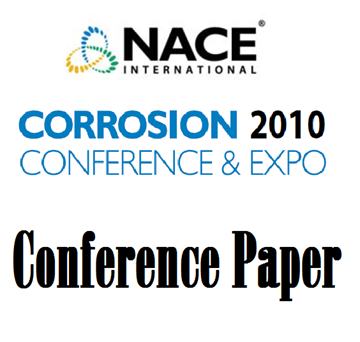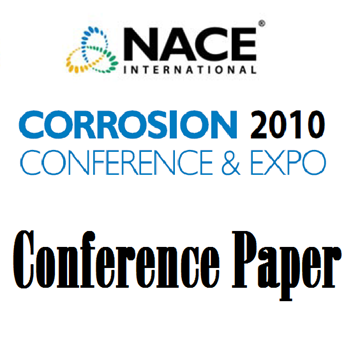Search
Pipelines, Tanks, and Underground Systems
View as
Sort by
Display
per page
09067 Isolation Joint Stray Currents – Experimental Testing and Modelling
Product Number:
51300-09067-SG
ISBN:
09067 2009 CP
Publication Date:
2009
$20.00
100% Solids Elasatometric Polyurethane vs 100% Solids Epoxy Linings in Steel Potable Water Storage Applications
Product Number:
51219-194-SG
Publication Date:
2019
$20.00
10025 Remoteness of Impressed Current Anode Ground Beds
Product Number:
51300-10025-SG
ISBN:
10025 2010 CP
Publication Date:
2010
$20.00
10027 Impressed Current Cathodic Protection for External Bottom Plates of Large AST - Design Versus Factual Model
Product Number:
51300-10027-SG
ISBN:
10027 2010 CP
Publication Date:
2010
$20.00
10028 Implementing Remote Wireless Monitoring of Pipeline Integrity and Cathodic Protection
Product Number:
51300-10028-SG
ISBN:
10028 2010 CP
Publication Date:
2010
$20.00
10108 AC Corrosion and Cathodic Protection of Buried Pipelines
Product Number:
51300-10108-SG
ISBN:
10108 2010 CP
Publication Date:
2010
$20.00
15.5-Year Inspection Reveals the Effectiveness of a Single-Coat Epoxy
Product Number:
51322-17996-SG
Publication Date:
2022
$20.00
1D196, Laboratory Test Methods for Evaluating Oilfield Corrosion Inhibitors
Product Number:
24192-SG
Publication Date:
1996
$179.00
51316-6971-Innovative Polymeric Solutions For Flanged Pipework Protection
Product Number:
51316-6971-SG
ISBN:
6971 2016 CP
Publication Date:
2016
$20.00
51316-7012-A Finite Element Model Of The External Corrosion Of Buried Pipeline Steel Under The Combined Influence Of Heat Transfer Cathodic Protection And Oxygen Diffusion In Surrounding Soil
Product Number:
51316-7012-SG
ISBN:
7012 2016 CP
Publication Date:
2016
$20.00
51316-7019-Cathodic Protection System for Hot Sulphur Tank Bottom
Product Number:
51316-7019-SG
ISBN:
7019 2016 CP
Publication Date:
2016
$20.00
51316-7023-Methodology For The Evaluation Of Cleaning Pigs On Sludge Deposits From Corrosion Pits
Product Number:
51316-7023-SG
ISBN:
7023 2016 CP
Publication Date:
2016
$20.00












